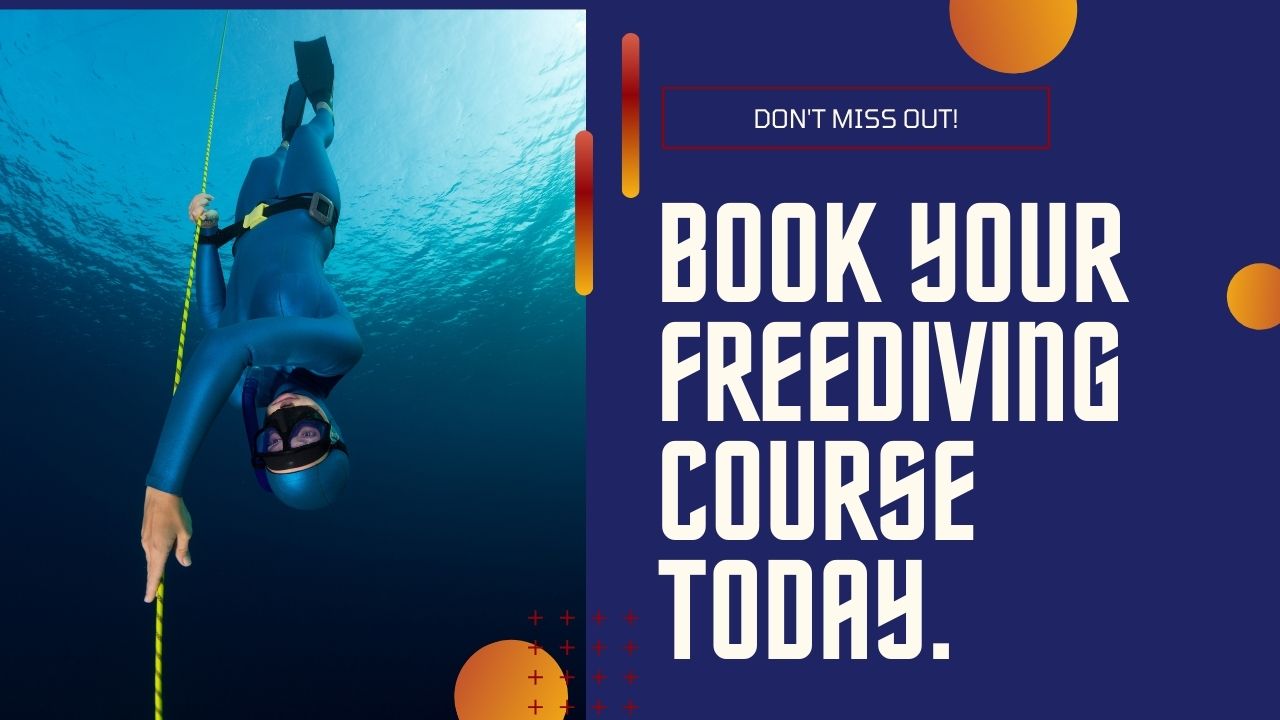You have 0 product(s) in your cart.
Abyss Scuba Diving
Safety First: Essential Tips For Freediving
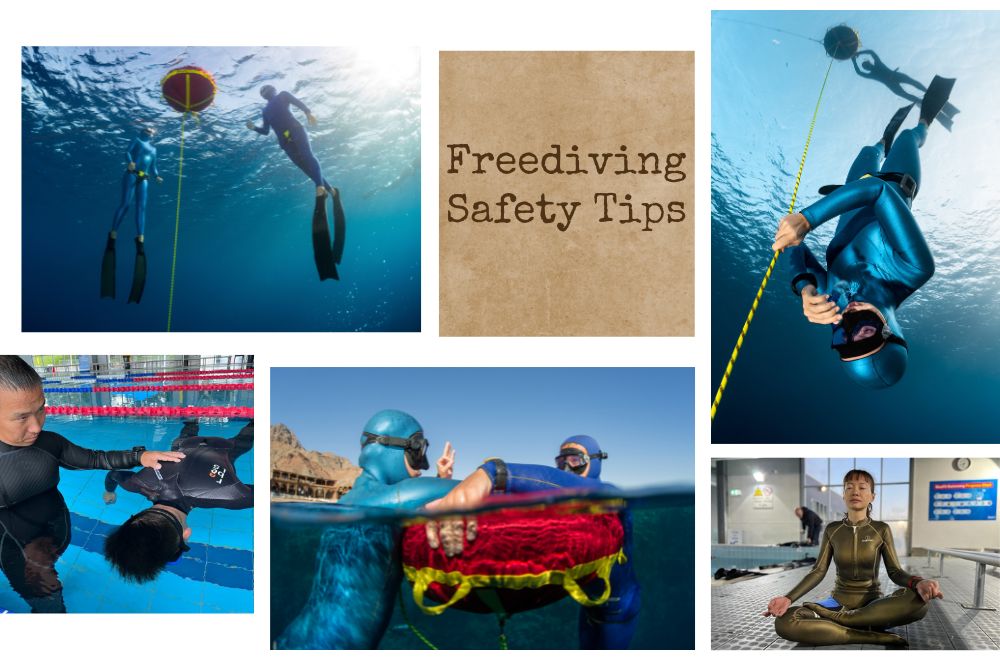
Safety First: Essential Tips for Freediving
Freediving is an exciting activity that challenges the limits of the human body. As freedivers venture into the depths of the ocean on a single breath, they experience a sense of freedom and connection with the underwater world that is unparalleled. However, this adventure also comes with potential risks and challenges. In this blog post, we will explore essential freediving safety tips, helping to ensure that you can enjoy this breathtaking sport while minimizing hazards and maximizing safety.
Short Summary
-
Understand risks and take courses to manage them safely.
-
Develop skills & knowledge through certified freediving training for safety, confidence & physical benefits.
-
Adhere to pre-dive preparations, safety measures during the dive & use of safety equipment in order to ensure a safe experience.
Understanding the Risks of Freediving
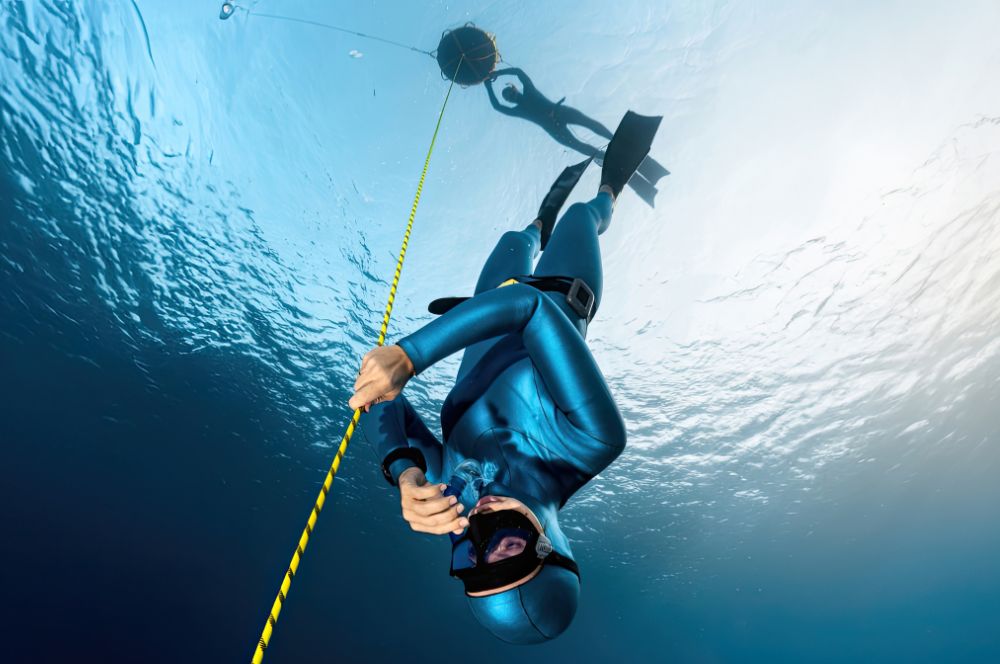
Freediving is not without its dangers, and understanding the associated risks is crucial for a safe and enjoyable experience. Unlike scuba diving, freedivers rely solely on their breath-holding ability, exposing them to unique threats such as blackouts and hypoxic fits. Additionally, environmental factors like strong currents, waves, and marine life can pose challenges that require careful consideration and appropriate response measures.
Freedivers are at risk of specific pressure-related risks. These include barotrauma of the eyes, ears, sinuses and lungs, nitrogen narcosis, and decompression sickness. It is essential to be aware of these potential risks and how to manage them effectively. Taking a freediving course can provide you with the knowledge and skills needed to minimize dangers and ensure a safe experience.
By understanding and respecting the risks associated with freediving, you can confidently take a deep dive into this mesmerizing aquatic environment and savour the exhilarating journey alongside fellow freedivers.
Proper Training and Certification
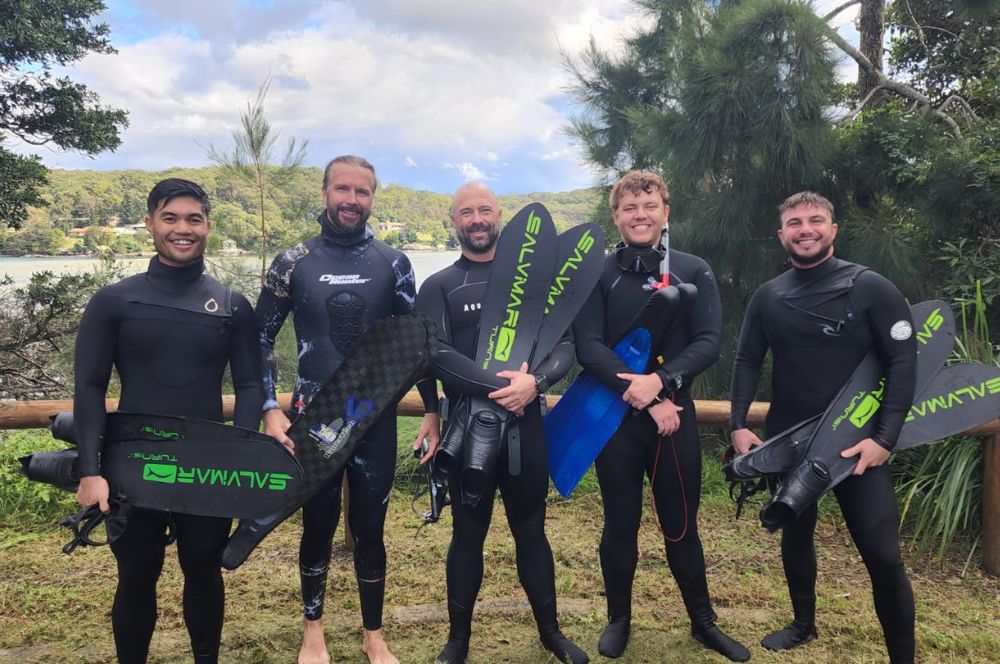
Proper training and certification play a vital role in ensuring a safe and successful freediving journey. Adequate training equips freedivers with the necessary skills and knowledge to recognize potential risks and dangers, such as shallow water blackouts, and adhere to fundamental principles of freediving safety.
A freediving course imparts invaluable information and significantly boosts your confidence in diving deep. In addition, listening to your body and having a safety team or a buddy during freediving sessions helps you monitor your body’s signals, ensuring a secure experience.
Role of Proper Training
Receiving proper training through freediving courses is crucial for enhancing techniques, boosting safety, and providing physical gains such as increased lung capacity, flexibility, and relaxation techniques. Diving without proper training can expose you to various risks, especially during deep dives, which makes it imperative to undergo proper training and adhere to safety measures.
When selecting a freediving buddy, it is recommended to choose someone who has completed a foundational-level course from a reputable freediving organization. Creating a dive plan together and practising safety measures can ensure a safe and enjoyable freediving experience while minimizing potential hazards.
Importance of Certification
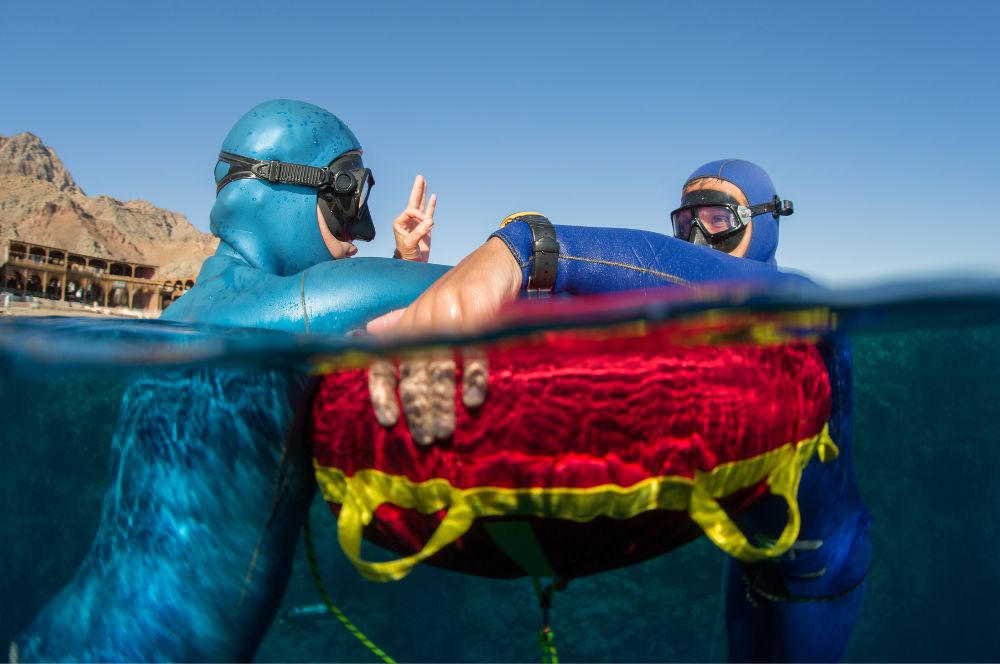
Certification for freediving is essential to guarantee that safety standards are upheld and that standardized knowledge and skills for safe freediving practices are provided, especially in freediving competitions. Gaining certification in freediving equips individuals with essential knowledge and skills, including safety techniques like rescue methods, the buddy system, and correct recovery breathing.
Failure to obtain certification for freediving can result in a lack of knowledge and skills necessary to ensure safe freediving practices, thus increasing the risk of potential injury or fatality.
Using a dive computer can help monitor your dive and provide valuable information to ensure safety and adherence to the best practices at the dive site.
Pre-Dive Preparations

Before you take the plunge, it is crucial to pay attention to pre-dive preparations, which include maintaining physical fitness, proper hydration and nutrition, dive planning and communication, and essential pre-dive checks. These preparations help minimize risks and ensure a safe and enjoyable dive for both you and your buddy.
By addressing these aspects beforehand, you can focus on the thrilling adventure that awaits you underwater.
Physical Fitness for Freediving
Physical fitness is an essential aspect of freediving, as it helps improve breath-hold capacity, endurance, and overall performance. Engaging in exercises like deadlifts, squats, and swimming can significantly enhance your physical fitness and prepare you for the challenges of freediving.
Before embarking on a freediving session, it is recommended to meet specific physical fitness requirements, such as being able to swim 200 meters and tread water or float for 10 minutes. By maintaining and improving your physical fitness, you can ensure that your freediving experience is not only safe but also enjoyable and rewarding.
Hydration and Nutrition for Freedivers
Proper hydration and nutrition play a vital role in preventing dehydration and reducing the risk of blackout during freediving. To ensure adequate hydration during training, it is recommended to keep a supply of water in the buoy and drink it after each dive.
Furthermore, it is essential to wait 3-4 hours after a full meal and 1-2 hours after a light snack before diving to prevent discomfort and minimize risks associated with diving on a full stomach.
By paying attention to your hydration and nutrition needs, you can maintain your energy levels, focus, and overall well-being during your freediving session, ensuring a safe and enjoyable experience.
Dive Planning and Communication
Dive planning and communication with your buddy are crucial for coordinating safety measures and responding to emergencies effectively. Freediving necessitates effective communication, often non-verbal, and planning should take into account factors such as depth, time, and safety measures.
By establishing clear communication channels and formulating a comprehensive dive plan, you and your buddy can ensure that safety protocols are followed, and emergencies are appropriately addressed. This collaborative approach not only enhances safety but also fosters a sense of camaraderie and shared responsibility during your freediving adventure.
Essential Pre-Dive Checks
Before entering the water, it is crucial to perform essential pre-dive checks, including inspecting your wetsuit, fins, mask, snorkel, and weights. Ensuring that your equipment is in good condition and functioning correctly can help prevent potential mishaps during your dive.
In addition to equipment checks, assessing the environmental conditions, such as weather and water conditions, temperature, visibility, and currents, is vital for a safe and enjoyable freediving experience. By conducting these pre-dive checks and addressing any issues that may arise, you can embark on your freediving adventure with confidence and peace of mind.
Safety Measures During the Dive
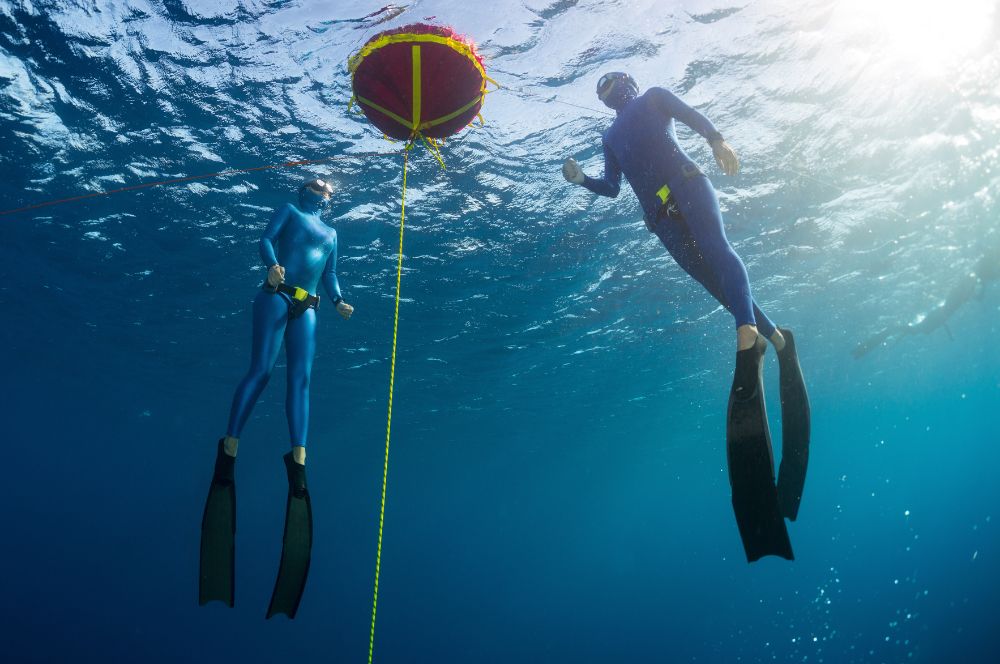
During your freediving session, it is crucial to adhere to safety measures, such as diving with a buddy, employing proper equalization techniques, managing weight for neutral buoyancy, practising correct breathing techniques and recovery, observing surface rest intervals and dive limits, avoiding hyperventilation and full exhale diving, and using safety equipment.
These measures help ensure a secure and pleasant dive while minimizing the risk of accidents and injuries.
The Importance of a Freediving Buddy
Having a freediving buddy is essential for ensuring safety, facilitating communication, and offering support in the event of an emergency. By selecting a partner who is experienced and knowledgeable about safety principles, you can enjoy a safer and more enjoyable freediving experience.
In addition to the benefits of companionship and camaraderie, diving with a buddy also allows for a more effective response to emergencies, such as blackouts or shallow water blackouts. By training together and practising rescue procedures, you and your buddy can be better prepared to handle any unexpected situations that may arise during your freediving adventure.
Proper Equalization Techniques
Equalizing pressure in your ears and sinuses is essential for a comfortable and safe diving experience. To accomplish this, you can use popular equalization techniques such as the Frenzel method, which is highly recommended for freediving. This technique replaces the commonly used Valsalva maneuver, especially when diving at deeper depths. By mastering these equalization methods, you'll be well on your way to a delightful and hassle-free underwater exploration. Remember that equalization is a skill that takes time, practice, and patience to perfect, so allow yourself the opportunity to learn and adapt to these techniques.
Weight Management for Neutral Buoyancy
Weight management for neutral buoyancy is essential for conserving energy and ensuring a safe ascent during freediving. To achieve neutral buoyancy, lead weights are typically used to counterbalance the positive buoyancy of the wetsuit and body. Additionally, neck weights may also be employed, and for greater precision, it is advisable to use smaller increment weights.
By carefully managing your weight and achieving neutral buoyancy, you can minimize the effort required to maintain your depth and position in the water, allowing you to focus on the beauty and serenity of the underwater world while your body’s motor control takes care of the rest.
Breathing Techniques and Recovery
Proper breathing techniques and recovery are crucial for preventing blackouts and maintaining oxygen levels during freediving. Recovery breathing is a technique used by free divers upon surfacing. It involves controlling and deliberately breathing to replenish the body with oxygen quickly.
By practising proper breathing techniques and recovery, you can effectively manage your oxygen levels and reduce the risk of blackouts or loss of consciousness. Remember to stay mindful of your breathing and listen to your body’s signals during your freediving session.
Surface Rest Intervals and Dive Limits
Observing surface rest intervals and dive limits is essential for preventing decompression sickness and ensuring a safe, freediving experience. One approach to calculate surface interval time is to divide the depth by ten and then multiply by two, ensuring ample recovery time between dives. For dives deeper than 50 meters, it is advised to limit yourself to one dive per day.
By adhering to surface rest intervals and dive limits, you can minimize the risk of decompression sickness and other potential complications, allowing you to enjoy your freediving adventure with peace of mind.
Avoiding Hyperventilation and Full Exhale Diving
Avoiding hyperventilation and full exhale diving is crucial for reducing the risk of blackouts and lung squeezes during freediving. Hyperventilation, which is breathing more than required by the body at that moment, can lead to a decrease in carbon dioxide levels, increasing the risk of a blackout. On the other hand, full exhale diving is a specialized training technique utilized by highly experienced freedivers and should not be attempted without proper guidance and experience.
To prevent these potential risks, it is essential to relax and breathe naturally before diving, taking no more than 2-3 deep breaths immediately prior to diving. By avoiding hyperventilation and full exhale diving, you can reduce the risk of blackouts and lung squeezes, ensuring a safer, freediving experience.
Using Safety Equipment
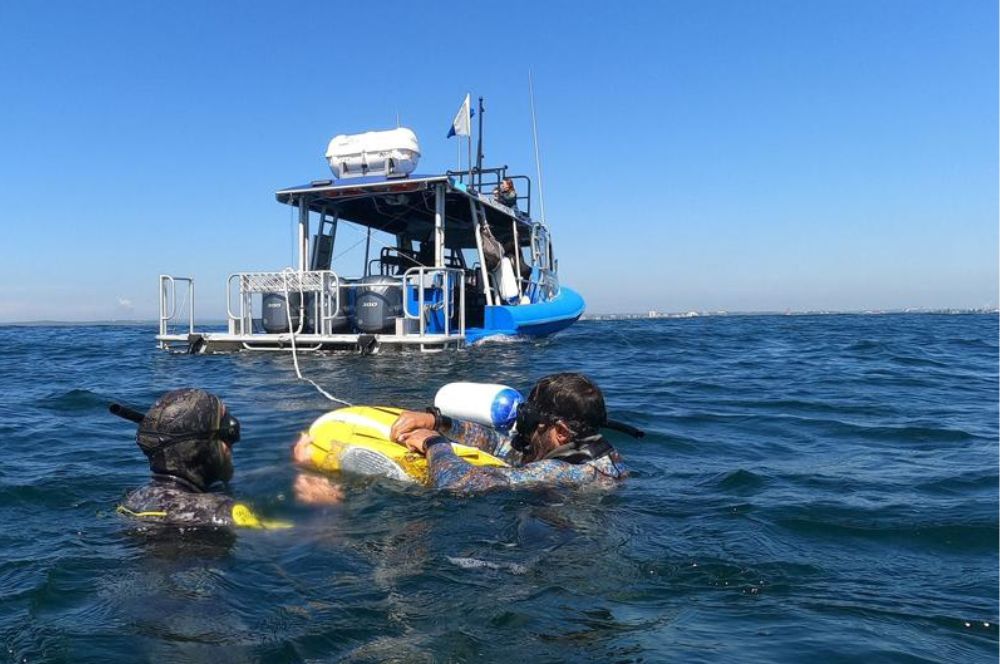
Using safety equipment, such as bright buoys, safety lanyards, and pulley systems, enhances freediving safety and helps prevent accidents. A safety lanyard is a rope or cord attached to the diver and the dive line, recommended for use when diving deeper than 20 meters or when visibility or currents are poor. Bright buoys increase visibility to boats, while pulley systems facilitate the most efficient and effective rescue methods in case of emergencies.
By incorporating safety equipment into your freediving routine and having a safety diver by your side, you can further minimize risks and ensure a safer and more enjoyable experience. Remember that safety should always be the top priority when venturing into the depths of the ocean.
Recognizing and Responding to Emergencies
Recognizing and responding to emergencies, such as blackouts, shallow water blackouts, and lung squeezes, are essential skills for freedivers to ensure the safety of themselves and their buddies. Proper training and practice can help you develop the necessary skills to identify and effectively handle emergency situations during your freediving session.
In the event of an emergency, it is crucial to remain calm, assess the situation, and take appropriate action, such as administering first aid or contacting emergency services. By being prepared to recognize and respond to emergencies, you can further enhance your freediving experience's safety and ensure your and your buddy's well-being.
Summary
Freediving is a thrilling and captivating sport that offers a unique connection with the underwater world. However, it is essential to prioritize safety and adhere to proper practices to minimize risks and ensure a secure and enjoyable experience. By understanding the risks, obtaining proper training and certification, preparing for your dive, implementing safety measures, and recognizing and responding to emergencies, you can confidently embark on your freediving journey and savour the beauty of the ocean depths.
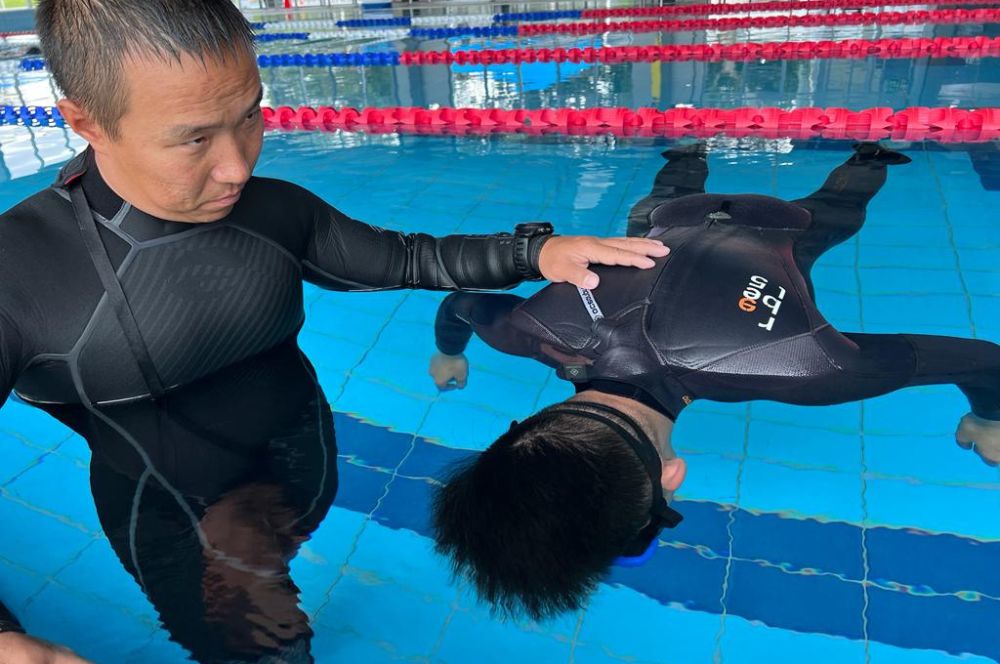
Frequently Asked Questions
What is the most common risk in freediving?
The most common risk for freedivers is a blackout, as oxygen levels in the blood can drop below a certain level, resulting in unconsciousness. Proper training and safety precautions should always be taken before diving to ensure a safe and enjoyable experience.
30 Sept 2020.
How do free divers' lungs not collapse?
Thanks to a combination of peripheral vasoconstriction and blood shift, free divers can protect their lungs under the pressure of the depths. By redirecting their blood from the limbs towards the vital organs and brain, they can maintain oxygen levels to these areas and prevent their airspaces from collapsing.
How do you prevent lung squeeze freediving?
To prevent lung squeeze while freediving, it is important to stay within your limits, stretch your ribcage and diaphragm regularly, and stay relaxed with slow progression. Good posture and a strong blood shift can also help prevent lung squeeze.
Additionally, avoid any jerky movements or stretches at depth.
What not to do before freediving?
As a general rule, it is best to avoid drinking caffeine or alcohol, eating heavy foods, and smoking prior to freediving. All of these activities can reduce your breath-hold time and hinder your diving performance.
Keep yourself well-hydrated and well-rested before diving to ensure your safety and improve your freediving experience.
How do you do safety in freediving?
To ensure safety when freediving, it is important to adhere to essential safety guidelines. These include never diving alone, avoiding hyperventilating before a dive, equalizing during dives, and always creating an accurate dive plan that takes into account sea conditions and current weather.
Regularly taking three recovery breaths after each dive and never diving when fatigued or cold are also important safety considerations.
RELATED POSTS
-
Learn to Freedive: Your Guide to the…

Learn to Freedive:…
Learn to Freedive: Your Guide to the Freediver Course for Fun Dive into a world of tranquillity, serenity, […] -
Sydney's Thriving Freediving Community:…
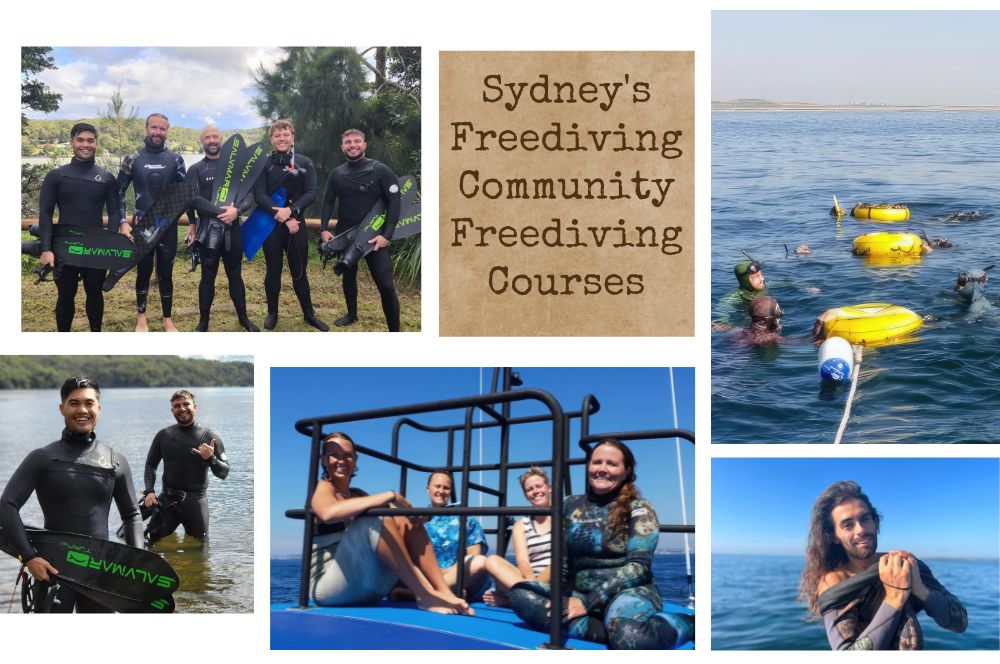
Sydney's Thriving Freediving…
Sydney's Freediving Community: An Introduction Welcome to the exhilarating world of freediving in Sydney! […] -
Unlock the Benefits of Neck Weight…
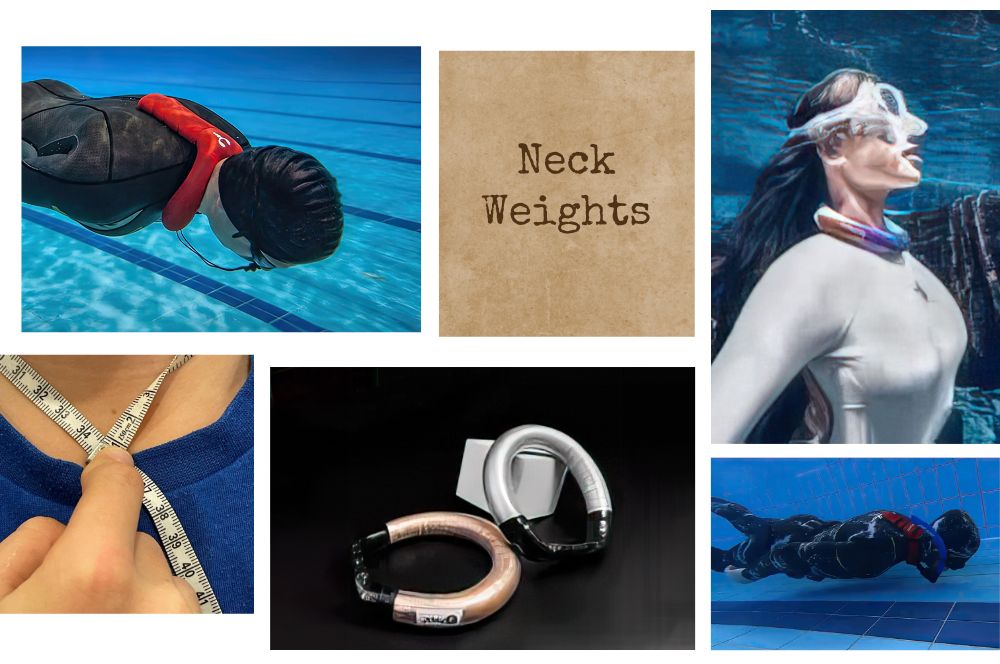
Unlock the Benefits…
Unlock the Benefits of Neck Weight Freediving Freediving is an extraordinary sport that tests your physical […] -
What Is the Ideal Weight for Freediving?

What Is the Ideal Weight…
What Is the Ideal Weight for Freediving? Freediving is a thrilling yet challenging sport, pushing the limits […]
Recent Posts
